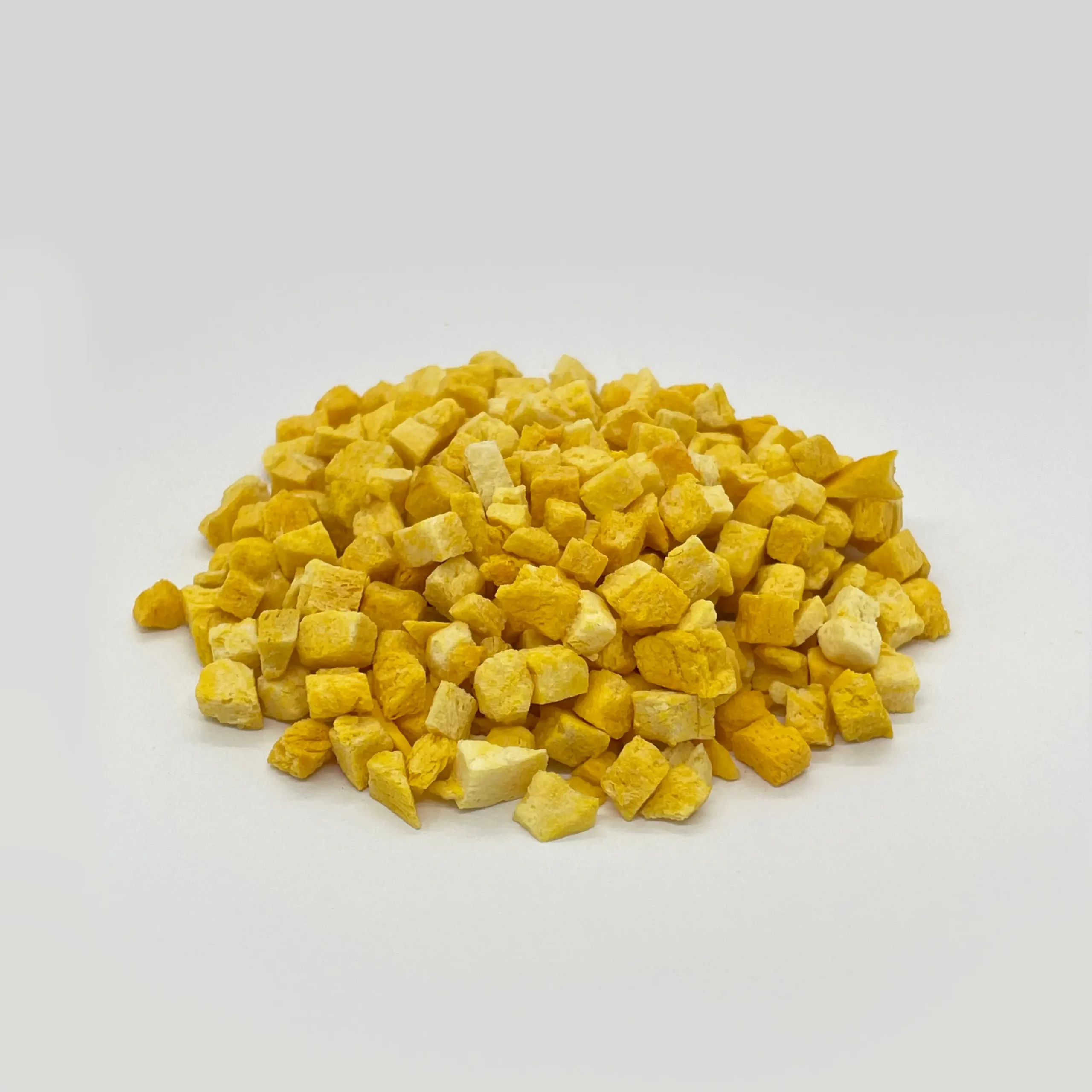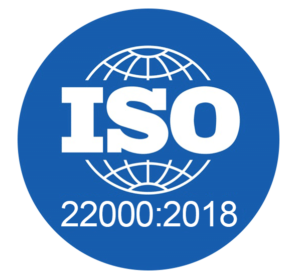

Pumpkin
The raw squash we use is a variety of butternut squash that is round in shape with smooth, slightly ribbed skin and is usually dark yellow to orange in colour. The thick shell contains edible seeds and pulp. All squash are winter squash, the ripe fruit of certain species of gourds. Characteristics that often define "pumpkin" include a smooth, slightly ribbed rind and a deep yellow to orange colour. The diced pumpkin is orange. This vegetable is popular due to its natural sweetness and year-round availability.
Production Cycle:
All year round
Shelf Life:
10 years
Available in:
Dice
Packaging Format:
Bulk
Ingredients:
Pumpkin
Excipients:
Benefits
Freeze-dried pumpkin is good for controlling blood sugar, lowering cholesterol and protecting eyesight. Freeze-dried pumpkin is high in calories, rich in vitamin A beta carotene, dietary fibre can help food digestion, and low in other nutrients, such as carbohydrates, fat, and protein.
Recipe
After rehydration, the pumpkin can be boiled, steamed, or roasted.
For Soup
Wash and chop the onion and set aside. Pour oil into a pan and heat. Add minced onion and diced pumpkin and stir-fry, then pour in the broth, add a little salt and pepper to taste and serve
For Porridge
Wash the rice and put it in the pot. Add enough water to bring to a boil, stirring constantly to prevent sticking. Then add the freeze-dried diced pumpkin and continue to heat until the dish is cooked.
For Fried
Heat oil in a pan, add minced garlic and sauté until fragrant, then add diced pumpkin and stir-fry, add water to cook until cooked, then add a little salt and sugar to taste when cooking, and then serve.
Tips
People with stomach heat and dampness should not take it.





